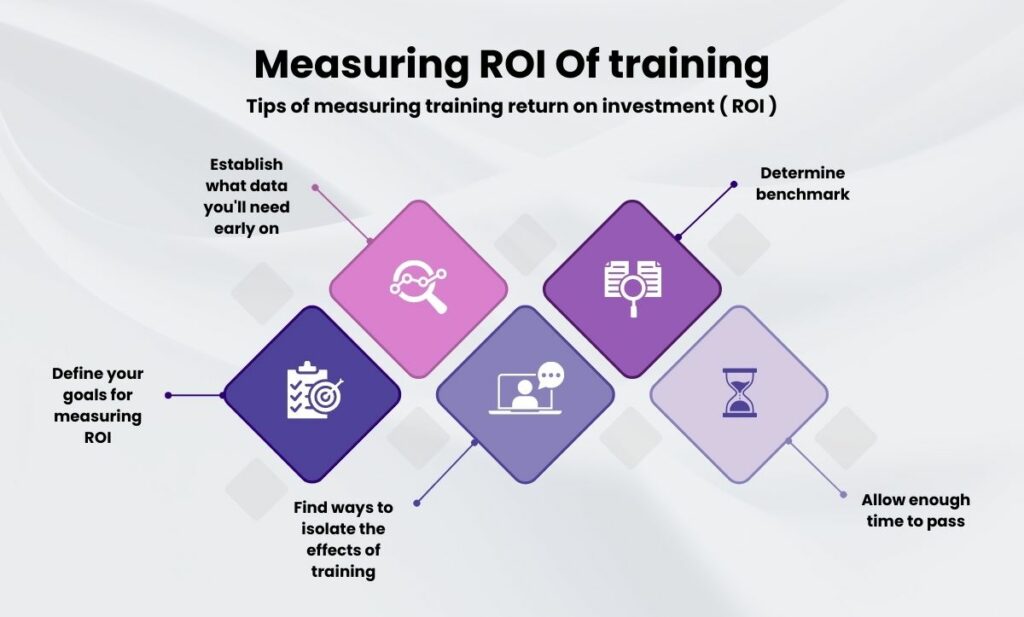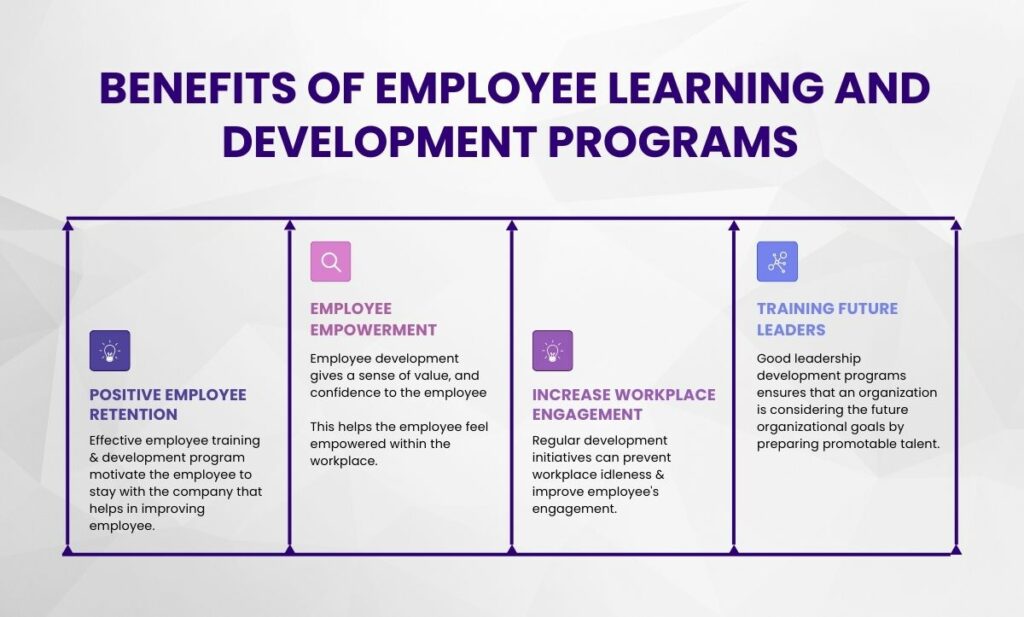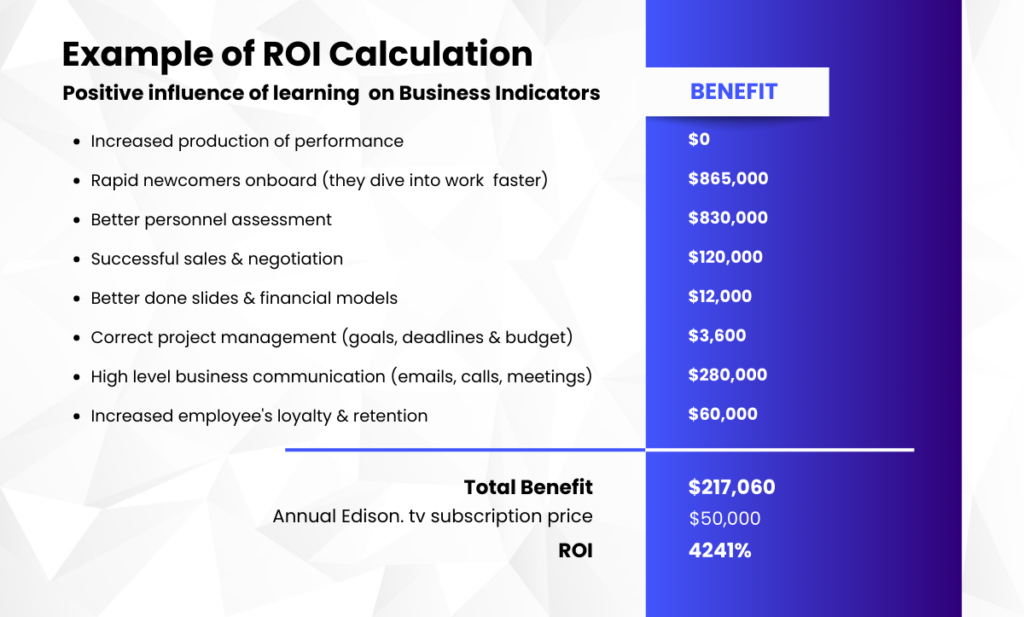
ROI of Employee Learning and Development Programs: A Step-by-Step Guide for Measuring Success
Welcome to the world of employee learning and development, where investing in your people can unlock the true potential of your organization. As industry trends show, companies that prioritize employee development are more successful and competitive in today’s fast-paced business environment.
According to a report by LinkedIn, 94% of employees would stay at a company longer if it invested in their career development. Furthermore, companies with high-performing learning and development programs are 92% more likely to be financially successful.
But how can you ensure that your learning and development programs are not just a cost center, but actually contribute to the bottom line? That’s where measuring the return on investment (ROI) of your L&D programs comes in.
As the famous management consultant, Peter Drucker, once said, “What gets measured gets managed.” In this comprehensive guide, we will explore the science of calculating ROI for employee learning and development programs.
We’ll discuss the benefits of measuring ROI, strategies for maximizing the ROI of L&D programs, and common challenges in measuring ROI. So, whether you’re an L&D professional, a manager, or a business owner, let’s unlock the ROI of your employee learning and development programs and drive organizational success.
Understanding ROI in Learning and Development Programs
When it comes to investing in employee learning and development programs, it’s important to understand the return on investment (ROI) of these programs. Simply put, ROI is a measure of the financial gain or loss generated from an investment.
In the case of L&D programs, ROI measures the financial benefits (such as increased productivity or revenue) compared to the costs of the program.
Measuring the ROI of L&D programs is important for several reasons.
- It helps organizations determine whether the program is actually worth the investment.
- It provides valuable data for improving the effectiveness of future programs.
- It can help justify the investment in L&D programs to stakeholders and decision-makers.
According to a study by the Association for Talent Development (ATD), companies that invest in employee training and development programs see a 24% higher profit margin than those that don’t.
Furthermore, companies with strong L&D programs have 218% higher income per employee than those with weaker programs. These statistics demonstrate the financial benefits that can result from investing in employee learning and development programs.
However, measuring ROI for L&D programs can be challenging.
It requires identifying and tracking the costs and benefits of the program, establishing clear learning objectives, and measuring the impact of the program on employee performance and organizational outcomes. Despite these challenges, measuring ROI is an essential component of effective L&D program management.
Also, Read: Best Corporate Training & Leadership Development Programs 2023
What are the Benefits of Employee Learning and Development Programs?
Employee learning and development programs offer a wide range of benefits for both employees and organizations. Here are some of the key benefits of investing in these programs:
Increased employee engagement and motivation: When employees feel that their organization is investing in their professional growth, they are more engaged and motivated to perform at their best.
Improved employee performance: Learning and development programs provide employees with the knowledge and skills they need to perform their job responsibilities effectively. This can result in improved job performance, productivity, and quality of work.
Enhanced employee retention: Employees who receive training and development opportunities are more likely to stay with their employer long-term, reducing turnover costs and maintaining institutional knowledge.
Greater innovation and creativity: By encouraging employees to learn and develop new skills, organizations can foster a culture of innovation and creativity that drives growth and competitive advantage.
Better customer satisfaction: When employees have the skills and knowledge they need to perform their job responsibilities effectively, they are better equipped to meet the needs of customers, resulting in higher customer satisfaction.
Increased profitability: Investing in employee learning and development programs can lead to increased profitability through improved performance, increased productivity, and greater customer satisfaction.
Overall, employee learning and development programs are essential for creating a highly skilled and motivated workforce that can drive organizational success.
How to Calculate ROI of Employee Learning and Development Programs
Calculating the ROI of employee learning and development programs involves determining the financial benefits generated by the program and comparing them to the costs of the program.
Here are the steps involved in calculating the ROI:
Identify the costs of the program: This includes direct costs such as course fees, materials, and instructor fees, as well as indirect costs such as employee time spent away from their job.
Determine the financial benefits of the program: This involves identifying the specific outcomes that can be directly attributed to the program. For example, if the program was designed to improve sales performance, the financial benefits might include increased revenue or profits.
Calculate the net benefits of the program: Subtract the costs of the program from the financial benefits to determine the net benefits.
Calculate the ROI: Divide the net benefits by the costs of the program and multiply by 100 to get the ROI percentage.
Here’s an example:
A company invests $10,000 in a sales training program for its employees. As a result of the program, the company sees an increase in sales revenue of $50,000. The direct costs of the program were $8,000 and the indirect costs were $2,000.
Net benefits = $50,000 – $8,000 – $2,000 = $40,000
ROI = ($40,000 / $10,000) x 100 = 400%
In this example, the ROI of the sales training program was 400%, indicating that the program generated a significant financial benefit for the company.
Calculating the ROI of employee learning and development programs can be complex, and it’s important to ensure that all costs and benefits are accurately identified and measured.
However, the process is essential for evaluating the effectiveness of the program and making data-driven decisions about future investments in L&D.
Also, Read: How To Create A Result-Driven Leadership Development Program?
How to Maximize the ROI of Employee Learning and Development Programs
To maximize the ROI of employee learning and development programs, here are some steps that organizations can take:
Conduct a Needs Assessment: Before implementing any learning and development program, it is important to assess the needs of the organization and its employees. This can help to ensure that the program addresses specific skills or knowledge gaps, rather than providing a general training program.
Set Measurable Goals: Define specific, measurable goals for the learning and development program. This can help to ensure that the program is aligned with the organization’s overall objectives and that progress can be tracked and evaluated.
Use a Blended Learning Approach: Incorporate a variety of learning methods, such as classroom training, e-learning, and on-the-job training, to maximize the effectiveness of the program.
Provide Ongoing Support: Support employees’ learning and development efforts by providing ongoing coaching, mentoring, and feedback. This can help to reinforce the learning and ensure that employees are able to apply what they have learned on the job.
Evaluate Effectiveness: Regularly evaluate the effectiveness of the learning and development program using metrics such as employee performance, engagement, and retention rates. This can help to identify areas for improvement and ensure that the program is delivering a positive ROI.
By following these steps, organizations can maximize the ROI of their employee learning and development programs and ensure that their investments in L&D are delivering tangible benefits to the organization.
How to Overcome Common Challenges in Measuring ROI of L&D Programs
Measuring the ROI of learning and development programs can be challenging for organizations. Here are some common challenges and strategies for overcoming them:
Difficulty in Measuring Intangible Benefits: Many of the benefits of learning and development programs, such as increased employee engagement or improved teamwork, are intangible and difficult to quantify. To overcome this challenge, organizations can use employee surveys, focus groups, and other qualitative methods to gather feedback on the impact of the program.
Lack of Data: Organizations may not have access to data that can help them measure the impact of learning and development programs. To address this challenge, organizations can work to establish data tracking mechanisms to gather information on employee performance, retention rates, and other relevant metrics.
Limited Resources: Limited resources, including time, budget, and staff, can make it challenging to conduct a comprehensive ROI analysis. To overcome this challenge, organizations can focus on measuring the ROI of their most critical learning and development programs and use existing resources, such as employee feedback and performance data, to conduct a preliminary analysis.
Difficulty in Isolating the Impact of L&D Programs: It can be challenging to isolate the impact of learning and development programs from other factors that may be affecting employee performance. To address this challenge, organizations can use control groups, randomized trials, and other experimental methods to compare the performance of employees who have participated in the program with those who have not.
Resistance to Change: Resistance to change can make it challenging to implement new measurement systems or to collect data from employees. To address this challenge, organizations can communicate the benefits of measuring the ROI of learning and development programs and work to build buy-in from employees and other stakeholders.
By addressing these common challenges, organizations can develop a more effective and comprehensive approach to measuring the ROI of their learning and development programs.
This can help to ensure that the organization is making strategic investments in employee development that deliver tangible benefits to the organization.
Key Takeaways
Measuring the ROI of employee learning and development programs is critical for organizations looking to make strategic investments in employee development.
By understanding the benefits of these programs, calculating their ROI, and implementing strategies to maximize their impact, organizations can create a culture of continuous learning and development that delivers tangible benefits to the organization and its employees.
We hope this comprehensive guide has provided you with valuable insights and strategies for unlocking the ROI of your organization’s learning and development programs.
Let’s work together to create a culture of learning and development that drives organizational success.



